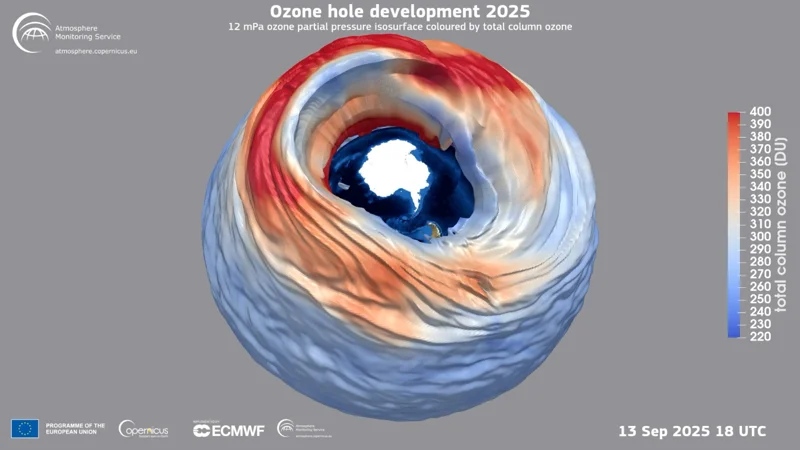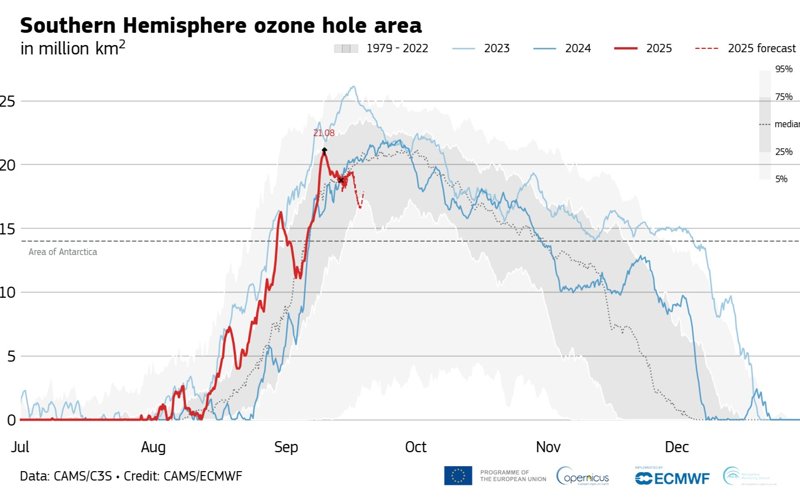2025 Antarctic ozone hole develops ahead of schedule, Copernicus data shows
The Antarctic ozone hole in 2025 developed earlier than in the previous year, expanding to around 15 million square kilometers, Kazinform News Agency correspondent reports.

According to the Copernicus Atmosphere Monitoring Service (CAMS), by early September, the size of the ozone hole reached an estimated 21.08 million square kilometers, which is above the long-term average of about 19.6 million square kilometers for this time of year but below the record levels of more than 24 million square kilometers observed in the early 2000s.
CAMS noted that this year’s development pattern resembles 2023 more closely than the more moderate 2024 season. However, in terms of size and diagnostics, it is closer to both 2024 and the 1979–2022 average.

“The 2025 ozone hole is showing highly variable patterns, underscoring the importance of reliable forecasts and analyses,” CAMS Director Laurence Rouil said.
Scientists highlight that variations in ozone hole size and duration are expected, as they depend on global atmospheric dynamics and chemical processes.
A separate study earlier found that Earth's ozone layer is on a path to full recovery, yet it could paradoxically contribute to further global warming.
